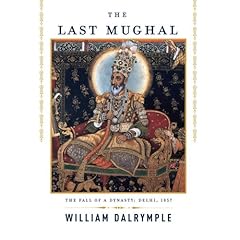
Descendants of the Mughal emperors, in early 1800s, were paid their upkeep by a magnanimous British East India Company. A Mughal prince got a monthy allowance of Rs.12 a month, which wasn’t more than the wages a head servant in any sahib’s household those days. William Dalrymple’s ‘The Last Mughal’ gives a fascinating account of the life and times during the Raj.
A sampler from excerpt of the book published in California Literary Review
Delhi College, a madarsa under the Mughals, was remodeled by the Company in 1828 “to uplift the uneducated and half-barbarous people of India”. The man behind this good work was Charles Trevelyan, brother-in-law of Thomas Babingdon Macaulay, whose minute declared that “a single shelf of a good European library was worth the whole native literature of India and Arabia”… The historical information which has been collected from all the books written in the Sanscrit language is less valuable than what may be found in the most paltry abridgments used at preparatory schools in England . . . The languages of Western Europe civilized Russia. I cannot doubt that they will do for the Hindoo what they have done for the Tartar.
In striking contrast to his three notably dressy younger brothers, Mirzas Jahangir, Salim and Babur, Bahadur Shah Zafar (1775-1838) was a man of spare figure and stature, plainly apparelled, almost approaching to meanness, reported Major Archer in 1828, when Zafar was fifty-three, and still a decade away from succeeding to the throne. “His appearance was that of an indigent munshi, or teacher of languages.”
When one of his followers was bitten by a snake, Zafar attempted to cure him by sending “a Seal of Bezoar [a stone antidote to poison] and some water on which he had breathed,” and giving it to the man to drink.. .The Emperor also had a great belief in charms, or ta’wiz, especially as a palliative for his perennial complaint of piles, or to ward off evil spells.
To read more of the excerpt access California Literary Review.

1 comment:
In 1950s when I was growing up, my private middle school charged me a fee of 1.5- 2.00 rupees per month,and for that we got well disciplined classes, good teaching from retired teachers who were very good and set good homework, and a friendly atmosphere between teachers and pupils. Even in early 1960s one could get a couple of iddlis and vadas with sambar and chutney for less than 70paise in a canteen near my college. As I have been saying a fiver would fetch a bagful of vegetables and fruits in Devaraja Market, and one were to go to Nanju Malige, one could literally double the quantity with fresh produce.
Even today one dollar/ one euro/ one british pound if used as a basic unit of currency has value. My relatives in Mysore say now a 100 rupee note has become this basic unit. If this trend continues, the dollar will become the currency of choice (a few friends who visit India frequently say it is beginning to happen) replacing the rupee for serious transactions.
Post a Comment